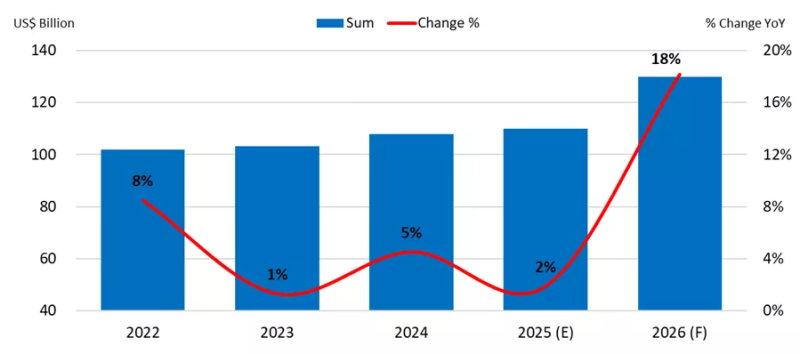Your cart is currently empty!
Semi equipment spending edges up in 2025 before jumping in 2026
Global fab equipment spending for front-end facilities in 2025 is anticipated to increase by 2 percent year-over-year to 110 billion dollars, Semi writes in its latest quarterly World Fab Forecast report. Spending is projected to rise by 18 percent in the following year, reaching 130 billion. This growth in investment is driven not only by demand in the high-performance computing (HPC) and memory sectors to support data center expansions but also by the increasing integration of artificial intelligence (AI), which is driving up the silicon content required for edge devices. “The global semiconductor industry’s investments in fab equipment have been edging up for six straight years and spending is poised to see a strong 18 percent increase in 2026 as production ramps to meet booming AI-related chip demand,” says Semi CEO Ajit Manocha.

The logic & micro segment is anticipated to be a key driver of growth in fab investments. This growth is primarily fueled by investments in cutting-edge technologies, such as 2nm-process and backside-power-delivery technology, which are expected to enter production by 2026. The logic & micro segment is projected to see an 11 percent increase in 2025 and 14 percent in 2026. Overall memory segment spending is expected to grow by 2 percent in 2025 and 27 percent in 2026.
Despite a decline from a peak of 50 billion dollars in 2024, China is expected to maintain its position as the leader in global semiconductor equipment spending, with projections of 38 billion dollars in 2025, representing a 24 percent year-over-year decrease. By 2026, spending is forecast to decline further by 5 percent year-over-year.
With the growing penetration of AI technology driving higher memory adoption, Korean chipmakers are planning to invest more in equipment for capacity expansion and technology upgrades, which is expected to position the region as the second-highest spender through 2026. Korean investment is forecasted to grow by 29 percent to 21.5 billion dollars in 2025 and by 26 percent to 27 billion in 2026.
Taiwan is set to secure third place in spending as its chipmakers aim to enhance their leadership in advanced technology and production capabilities. They’re projected to spend 21 billion dollars in 2025 and 24.5 billion in 2026 to meet the growing demand for AI applications across cloud services and edge devices.

